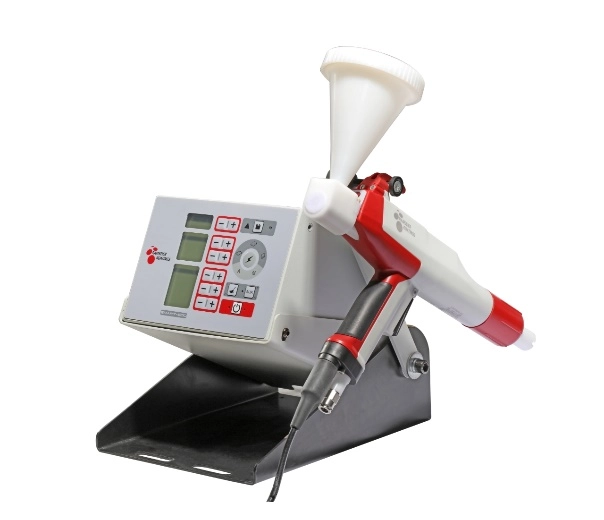Content Menu
● Understanding Modern Data Management Systems
>> What is a Modern Data Management System?
>> Key Features of Modern Data Management Systems
● Essential Metrics to Track
>> 1. Data Quality Metrics
>>> Accuracy
>>> Completeness
>>> Consistency
>> 2. Data Usage Metrics
>>> User Engagement
>>> Query Performance
>> 3. Data Storage Metrics
>>> Storage Utilization
>>> Data Growth Rate
>> 4. Data Security Metrics
>>> Access Control
>>> Data Breaches
>> 5. Operational Efficiency Metrics
>>> System Uptime
>>> Processing Time
● Benefits of Tracking Metrics
● Implementing a Metrics Tracking Strategy
>> Define Clear Objectives
>> Choose the Right Tools
>> Regularly Review and Adjust Metrics
● Challenges in Tracking Metrics
● Conclusion
>> Frequently Asked Questions
In today's data-driven world, organizations are increasingly relying on data management systems to harness the power of their data. A modern data management system (MDMS) not only helps in storing and retrieving data but also provides valuable insights through various metrics. This article explores essential metrics that can be tracked with a modern data management system, enabling businesses to make informed decisions and drive growth.

Understanding Modern Data Management Systems
What is a Modern Data Management System?
A modern data management system is a comprehensive framework that allows organizations to collect, store, manage, and analyze data efficiently. It integrates various data sources, ensuring data quality, consistency, and accessibility. With the rise of big data, cloud computing, and advanced analytics, MDMS has become crucial for businesses aiming to leverage their data assets.
Key Features of Modern Data Management Systems
Modern data management systems come equipped with several features that enhance their functionality:
- Data Integration: Seamlessly combines data from various sources, including databases, cloud services, and applications.
- Data Quality Management: Ensures the accuracy, completeness, and reliability of data through validation and cleansing processes.
- Data Governance: Establishes policies and procedures for data management, ensuring compliance with regulations and standards.
- Analytics and Reporting: Provides tools for data analysis and visualization, enabling users to generate reports and insights easily.
Essential Metrics to Track
Tracking the right metrics is vital for understanding the performance of your data management system and the overall health of your organization. Here are some essential metrics to consider:
1. Data Quality Metrics
Accuracy
Accuracy measures how closely data values match the true values. High accuracy is crucial for reliable decision-making. Organizations can track accuracy by comparing data entries against verified sources.
Completeness
Completeness assesses whether all required data is present. Missing data can lead to incorrect conclusions. Metrics for completeness include the percentage of missing values in datasets and the number of incomplete records.
Consistency
Consistency ensures that data is uniform across different systems and datasets. Organizations can track consistency by checking for discrepancies in data entries across various sources.
2. Data Usage Metrics
User Engagement
User engagement metrics track how often and in what ways users interact with the data management system. This can include the number of active users, frequency of logins, and the types of queries performed.
Query Performance
Query performance metrics measure the efficiency of data retrieval processes. Key indicators include query response time, the number of queries executed, and the success rate of queries.
3. Data Storage Metrics
Storage Utilization
Storage utilization metrics indicate how much of the available storage capacity is being used. This helps organizations manage their resources effectively and plan for future storage needs.
Data Growth Rate
The data growth rate measures how quickly data is being generated and stored. Understanding this metric helps organizations anticipate storage requirements and manage data lifecycle policies.
4. Data Security Metrics
Access Control
Access control metrics track who has access to data and how that access is managed. This includes monitoring user permissions, authentication methods, and any unauthorized access attempts.
Data Breaches
Tracking the number of data breaches and their impact is crucial for assessing the security posture of an organization. Metrics can include the frequency of breaches, the volume of data compromised, and the response time to incidents.
5. Operational Efficiency Metrics
System Uptime
System uptime measures the availability of the data management system. High uptime percentages indicate a reliable system, while downtime can disrupt business operations.
Processing Time
Processing time metrics track how long it takes to process data requests. This includes data ingestion, transformation, and retrieval times. Reducing processing time can enhance user satisfaction and operational efficiency.
Benefits of Tracking Metrics
Tracking these metrics provides several benefits for organizations:
- Informed Decision-Making: Metrics offer insights that help leaders make data-driven decisions.
- Improved Data Quality: Regular monitoring of data quality metrics leads to better data management practices.
- Enhanced User Experience: Understanding user engagement and query performance helps improve the system's usability.
- Resource Optimization: Storage and operational efficiency metrics enable organizations to optimize their resources effectively.
Implementing a Metrics Tracking Strategy
Define Clear Objectives
Before tracking metrics, organizations should define clear objectives. What do you want to achieve with your data management system? Whether it's improving data quality, enhancing user engagement, or optimizing resources, having clear goals will guide your metrics tracking efforts.
Choose the Right Tools
Selecting the right tools for tracking metrics is essential. Many modern data management systems come with built-in analytics and reporting features. Additionally, third-party tools can provide advanced analytics capabilities.
Regularly Review and Adjust Metrics
Metrics should not be static. Regularly reviewing and adjusting the metrics you track ensures they remain relevant to your organization's goals. This iterative process allows for continuous improvement and adaptation to changing business needs.
Challenges in Tracking Metrics
While tracking metrics is beneficial, organizations may face several challenges:
- Data Silos: Disparate data sources can make it difficult to obtain a comprehensive view of metrics.
- Complexity: The sheer volume of data can overwhelm organizations, making it challenging to identify which metrics are most important.
- Resource Constraints: Limited resources may hinder the ability to implement and maintain a robust metrics tracking system.
Conclusion
In conclusion, tracking essential metrics with a modern data management system is crucial for organizations aiming to leverage their data effectively. By focusing on data quality, usage, storage, security, and operational efficiency metrics, businesses can gain valuable insights that drive informed decision-making and operational improvements. Implementing a structured metrics tracking strategy will enable organizations to navigate the complexities of data management and harness the full potential of their data assets.

Frequently Asked Questions
1. What are the most important metrics to track in a data management system?
- The most important metrics include data quality metrics (accuracy, completeness, consistency), data usage metrics (user engagement, query performance), data storage metrics (storage utilization, data growth rate), data security metrics (access control, data breaches), and operational efficiency metrics (system uptime, processing time).
2. How can organizations improve data quality?
- Organizations can improve data quality by regularly monitoring data quality metrics, implementing data validation processes, and conducting data cleansing activities to remove inaccuracies and inconsistencies.
3. What tools are available for tracking data management metrics?
- Many modern data management systems come with built-in analytics features. Additionally, third-party tools like Tableau, Power BI, and Google Data Studio can provide advanced analytics capabilities.
4. How often should metrics be reviewed?
- Metrics should be reviewed regularly, ideally on a monthly or quarterly basis, to ensure they remain relevant and aligned with organizational goals.
5. What challenges do organizations face when tracking metrics?
- Common challenges include data silos, the complexity of managing large volumes of data, and resource constraints that may limit the ability to implement effective metrics tracking systems.
Hot Tags: China, Global, OEM, private label, manufacturers, factory, suppliers, manufacturing company










































 .
. 